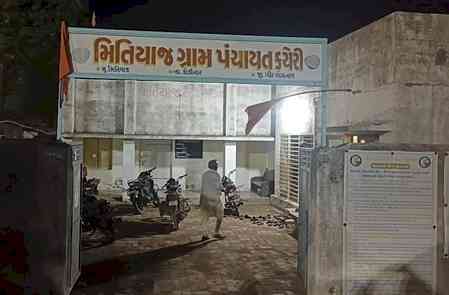Understanding Haemorrhoids (Piles): A Comprehensive Guide to Causes, Symptoms; and Treatment Options
Hemorrhoids, commonly referred to as piles, are inflamed and swollen blood vessels situated in the anorectal area. Initially, they often lead to painless bleeding during bowel movements, which can later advance to painful sensations and discomfort. Hemorrhoids may also bring about itching and swelling in the vicinity of the anal region.

Dr. Rajeev Premnath, General, Laparoscopic Surgeon and Endoscopist, Hitech Hernia Centre, Ramakrishna Hospital Jayanagar, Bengaluru
Hemorrhoids, commonly referred to as piles, are inflamed and swollen blood vessels situated in the anorectal area. Initially, they often lead to painless bleeding during bowel movements, which can later advance to painful sensations and discomfort. Hemorrhoids may also bring about itching and swelling in the vicinity of the anal region.
Classification of haemorrhoids
Hemorrhoids vary in terms of pain, itching, bleeding, mucus discharge, and discomfort, and they are categorized into different levels or stages based on these symptoms.
· First Degree: These hemorrhoids are internal and primarily result in painless bleeding with no noticeable swelling outside the anal canal. Diagnosis is typically done with a proctoscope instrument.
· Second Degree: At this stage, it begins to protrude from the anal canal but usually retracts on its own after a bowel movement.
· Third Degree: In this category, it emerges during bowel movements and requires manual reduction afterward. If not repositioned, they can lead to discomfort.
· Fourth Degree: These are external hemorrhoids that remain outside the anal canal at all times, causing pain and discomfort.
· Fifth Degree (Thrombosed Hemorrhoid): At this stage, hemorrhoids become extremely painful.
Causes of Hemorrhoids
Hemorrhoids can be caused by various factors. These include weakened rectal tissues and hormonal changes during pregnancy, affecting around 35% of pregnant women. While more common in adults over 50, hemorrhoids can also occur in younger individuals. Chronic diarrhea and straining during constipation contribute to their development by putting pressure on blood vessels. Prolonged sitting, especially on the toilet, can raise the risk. A low-fiber diet and repeated heavy lifting may also increase the likelihood of hemorrhoids. Being overweight amplifies the risk due to added abdominal pressure, and genetics can predispose some individuals to hemorrhoids. Nicotine also promotes the formation of haemorrhoids.
Signs and Symptoms
Internal hemorrhoids are often painless and can go unnoticed. They may cause rectal bleeding. External hemorrhoids are more noticeable, causing an itchy or painful anus, along with lumps near the anus and rectal bleeding. Prolapsed hemorrhoids can be painful and require manual adjustment.
Diagnosis and Treatment
It's advisable to seek guidance from a general surgeon who can assess your condition, provide a definitive diagnosis, determine the severity of your hemorrhoids, and create a treatment plan. Additionally, the surgeon may perform a sigmoidoscopy or colonoscopy to investigate potential underlying causes for the development of hemorrhoids.
· Medication and lifestyle adjustments, such as a high-fiber diet and adequate fluid intake, are the primary treatments for Grade I and II hemorrhoids.
· It's important to avoid prolonged straining at stools.
· If medical treatment proves ineffective for Grades I and II, surgical or outpatient procedures may be recommended.
· Grade III and IV hemorrhoids typically necessitate surgery, and there are various surgical methods to choose from.
· For Grade V hemorrhoids or thrombosed hemorrhoids, initial treatment involves medication to reduce inflammation, with the possibility of surgery considered afterwards.
Laser hemorrhoidoplasty - Treatment Option
Laser treatment offers distinct advantages over traditional hemorrhoid surgery in terms of pain relief and faster recovery. It is also linked to fewer complications and better preservation of the natural anatomy of the anal canal and anal cushions.
In laser hemorrhoidoplasty, surgeons have two options: using a CO2 laser or a Diode laser. During this procedure, laser energy is directed into the hemorrhoidal mass, which triggers a process of fibrosis by causing protein denaturation.
Laser therapy operates through a process called photoablation, where the laser passes through water and disrupts the H2O bond. This disruption leads to a reduction in the size of the hemorrhoidal tissue.
Furthermore, photocoagulation occurs, resulting in protein denaturation and the sealing of blood vessels.
Photo vaporization is another effect of laser treatment, wherein the hemorrhoids absorb the laser energy, leading to fibrosis and the fixation of the tissue within 6-8 weeks.
It's important to note that laser hemorrhoidoplasty does involve some level of discomfort and will necessitate the use of pain relief medication. However, this discomfort is significantly less than what is typically experienced with conventional surgical approaches.
Prevention and Lifestyle Changes
Preventing hemorrhoids and sustaining a healthy lifestyle involves several key components. Firstly, it's essential to adhere to dietary guidelines that support good digestive health, focusing on fiber-rich foods. Staying properly hydrated and engaging in regular physical activity is fundamental for maintaining overall bowel function. Adequate fiber intake is crucial as it softens stools and helps prevent constipation, a common contributor to hemorrhoids. Healthy bowel habits, such as responding promptly to the urge for a bowel movement, can reduce the risk of straining during defecation, which can exacerbate hemorrhoids. Lastly, scheduling regular healthcare check-ups is advisable to facilitate early detection and management of potential issues related to hemorrhoids or digestive health.


 City Air News
City Air News 











